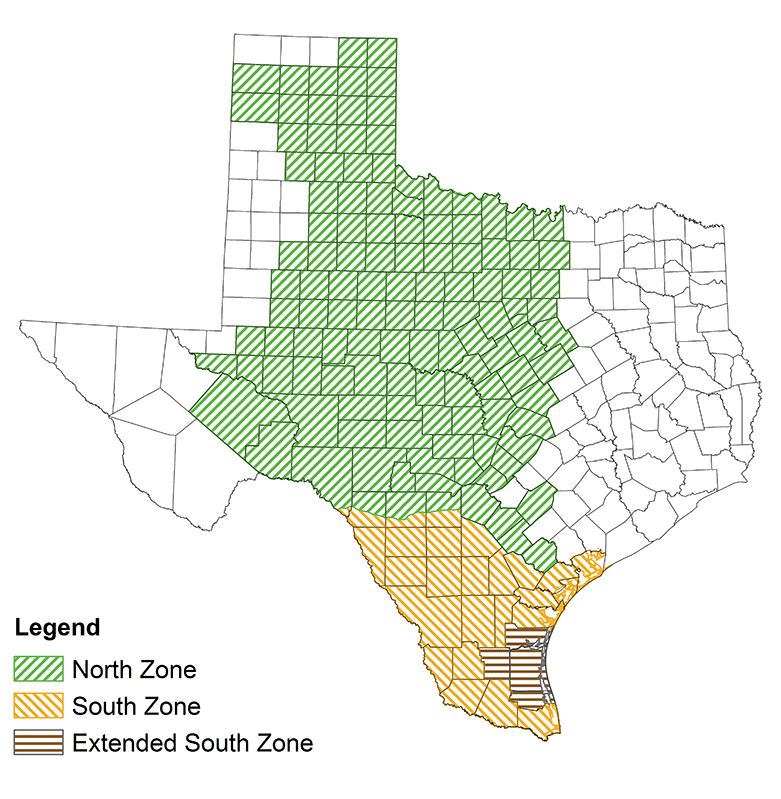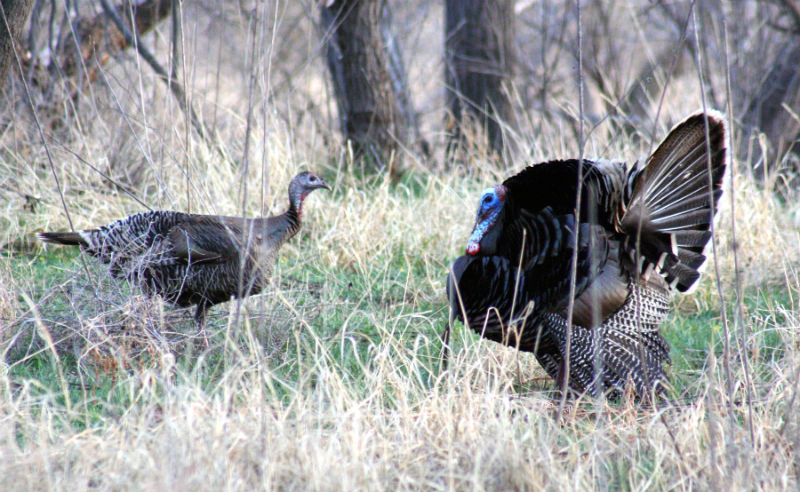If you’ve checked in with the news media recently, you’ve seen that this year’s Thanksgiving Day spread is projected to be the most expensive in the history of the get-together. The highest cost is set to be your bird … but it doesn’t have to be if you can procure your own wild Butterball!
I’ve hunted across Texas — from Panhandle shelter belts and Rolling Plains oak mottes to South Texas mesquite thickets and Pineywoods forest cover — and one quarry in particular calls each of them home, providing some of the toughest hunting around: the wild turkey.
In general, fall turkey hunting is an afterthought for most Texans. The pursuit is different than in the spring breeding season, when boisterous gobblers make the hunt unlike any other. However, if you’re spending time in a deer blind during the next couple of months, you have as much opportunity as ever to bring home your own bird for the Thanksgiving or Christmas dinner spread.
Rio Grande turkeys act much differently during this time of year, grouping up into large flocks and spending most of their time foraging and trying to avoid hungry predators that are looking for their own turkey dinner. If you know what to look for and how to approach a fall turkey hunt, it only adds to the opportunities in the field.
While the rise in turkey hunting costs may keep some hunters from enjoying the pursuit in the spring — guided hunts can run into the thousands of dollars — fall is the perfect time to target hens and gobblers since most deer hunters are sitting in great Rio Grande turkey country already. And with a four-bird annual limit, you can certainly bring home some extra Butterball for friends, family and even those pesky in-laws.

Texas fall turkey hunting tactics
Fall turkey hunting is different than the pursuit in the spring, when revved-up gobblers readily come to imitations made by hunters as the breeding season is in full swing from the top of Texas to the bottom.
Hunters are able to take either sex of birds in most places. However, in some counties hunters may only harvest gobblers, jakes or bearded hens during the fall months. Check the Outdoor Annual produced by Texas Parks & Wildlife to make sure you’re legal on all accounts. The annual bag limit for Rio Grande turkey hunters in the aggregate is four. The aggregate also applies to spring seasons so hunters should be cautious of using up all their tags in the fall if they anticipate wanting to chase after the birds in March, April and May.
The main thing to consider when fall turkey hunting is safety. There are many more hunters in the field, at least a half-million or more people hunt deer in Texas even in below-average seasons, according to TPWD estimates, and rifles carry much more destructive force over longer ranges than shotguns. Hunter safety instructors and game wardens urge hunters to not wear anything with blue, red or black hues during the spring as the colorations could cause confusion for hunters in low light or who are too quick with pulling the trigger before identifying a target. That is doubly reinforced in the fall, especially if you’re hunting on public tracts of land.
Fall turkey hunting can be done in much the same fashion as during the spring, when hunters position themselves along likely travel routes or near roost sites with their back squarely against a wide-based tree. Don’t forget to use head-to-toe camo as the birds have excellent eyesight. You also can implement decoys in the pursuit, tailoring your setup to whatever you’re seeing from the birds. The fall certainly is a time when multiple decoys should be used if you’re taking a more traditional approach.

Rio Grande turkeys typically hang out in flocks once the spring breeding season has passed. Much like other wildlife, turkeys will form into groups consisting of gobblers, jakes, hens or all of the above. During early spring hunts I’ve personally witnessed what I would have called large flocks of birds — 20 or more — hanging out with regularity in the same vicinity. However, I quickly learned that was nothing compared with fall and winter grouping, which can include 50 to 100 birds in many locales.
As with spring turkey hunting, the fall version of the pursuit typically calls for advance scouting to locate the best areas to set up should you seek out the birds the way most hunters do in the spring — by setting up near roost sites or food sources and then calling and running and gunning should you have to in the quest to fill your tags. Natural food sources are your best bet in the fall, but turkeys can be finicky and roam over larger areas than they do in the spring if the groceries have been knocked back by Mother Nature.
Tracking of wounded game the responsibility of ethical Texas hunters
Attempting to call in a large group of turkeys can be tough, honestly really tough, but it can be done if you’re patient. If you’re just looking to harvest a bird, jakes are the ticket since they usually are more vocal and easy to lure in than gobblers or even hens.
It’s a good bet more turkeys are harvested with deer rifles than shotguns each year, but there are things to account for should you attempt a shot with a high-velocity bullet instead of scattergun pellets. The easiest thing to do is put the crosshairs or sights dead on the middle of the bird and pull the trigger. However, that ends up with a whole lots of flying feathers — and wasted meat.
On birds I’ve taken with a rifle, I stuck the scope on the bird right at the base of the neck and squeezed off a round. Each time I’ve come back with all of the same meat that I did when I harvested a bird with a shotgun and place the open sights just below the turkey’s head.
Hunting turkeys in the fall also lends itself to being able to stay out all day. During the spring, especially in the South Texas brush country, temperatures often can rise into the 90s or even hotter, which means early and late hunting if you’re doing much moving to find birds. When you’re hunting in the fall the temperatures likely are half that regardless of what part of Texas you’re in.
And that’s one of the biggest hurdles to successful turkey hunting — the more time you put in the better the results. It always has worked that way.
Texas turkey hunting hot spots
Hill Country
The top counties in the region are Kerr, Gillespie, Kimble, Menard, Mason, Llano, Concho, McCulloch, San Saba, Brown and Coleman.
South Texas
The top counties in the region are Bee, Live Oak, McMullen, Jim Wells and Duval.
Rolling Plains
The top counties in the region are Shackelford, Throckmorton and Haskell.
Eastern Panhandle
The top counties in the region are Hemphill, Wheeler, Collingsworth and Childress.
Turkeys in Texas
Turkeys are native to the Americas and probably evolved from pheasant-like ancestors. Cortez, the Spanish explorer, found the Aztecs and other natives in Mexico in possession of domesticated turkeys in 1519, according to Texas Parks & Wildlife.
The explorer Vasco de Gama introduced turkeys into Europe. Turkeys were almost extirpated from Texas by the late 19th century, at which time protective efforts outlawing trapping for five months of the year were initiated. In 1903 a bag limit of 25 turkeys per day throughout a five-month season was established. These liberal regulations and lack of resources to enforce them did not help the turkey on most of its range.
In 1919 the legislature created a bag limit of three bearded gobblers per season. Increased
protection by conservation-minded landowners and additional game wardens in the 1920s
helped turkey populations recover throughout much of the state. TPWD has trapped more than 30,000 Rio Grande turkey since the 1920s and restocked them to suitable habitats throughout the state in an effort to restore the bird to its historic range. TPWD has partnered with the National Wild Turkey Federation and other state agencies to restore the eastern turkey to East Texas. These turkeys were trapped in other states and released at hundreds of release sites in East Texas during the past 20 years.
Texas duck hunting forecast shows uncertainty for waterfowl hunters



















